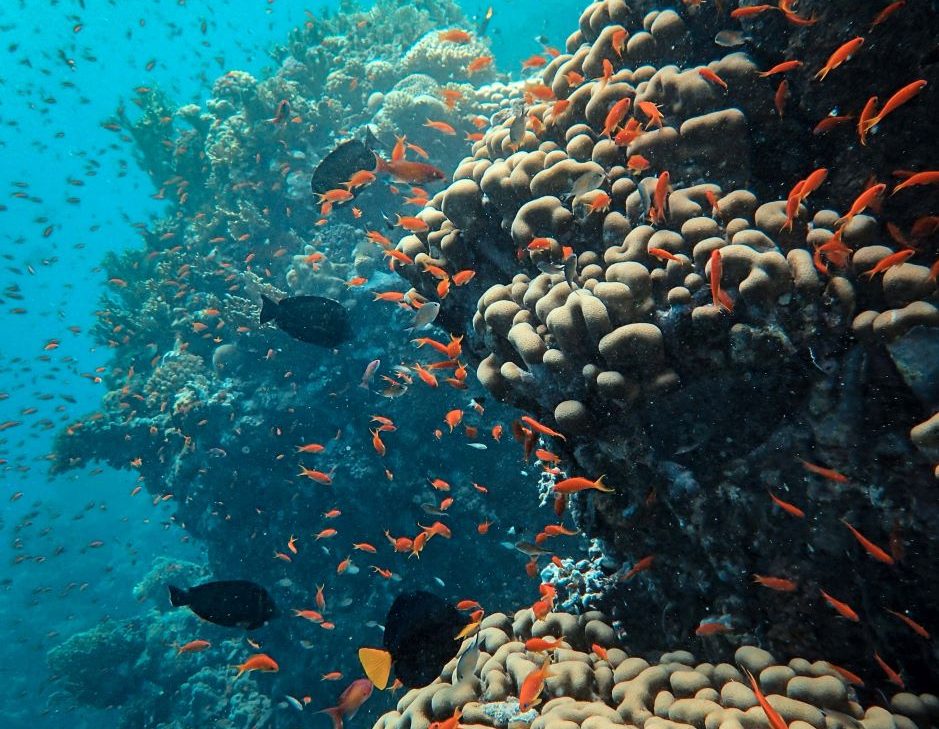How Low Can Fish Go? Diving Deeper to Beat the Heat
 (Credit: Francesco Ungaro, via Pexels)
(Credit: Francesco Ungaro, via Pexels)As many scientists have said for decades, the planet is only getting warmer due to climate change, and the heat is getting to organisms on land and in water. Terrestrial organisms have begun migrating to cooler climates causing global shifts in species distributions. Temperature changes have led to many new species being introduced to ecosystems and older species having to find a new home.
At a certain temperature point, the habitat loss becomes so severe that aquatic and land creatures have no choice but to find a new place to live. For several years now, scientists have documented a global shift northward for species across the globe. More recently, however, scientists have observed an average increase in habitat depth for fish in the ocean.
How is Climate Change Affecting Fish
Interestingly enough, some species were noted as traveling to shallower water or southward. A 2013 study examined the local effects of climate change on marine species’ behavior. Some species, like those in the Gulf of Alaska, actually move south following a natural cycle of Pacific cooling. The Yale School of the Environment reported that others like those found in the Gulf of Maine drifted southwest seeking cooler spots that form closer to shore.
Unfortunately, the shore isn’t as safe as it may seem everywhere. A 2017 study observed that the ocean has been deoxygenating for years now. The areas most impacted? Shores that suffer from agricultural and industrial runoff. This runoff creates hypoxic dead zones that will only spread further from the bay. Fish rely on dissolved oxygen to survive, so the loss of oxygen makes habitats inhospitable to many species.
Not only have shores suffered depleting oxygen levels, but the rest of the ocean has seen a decline. Warm water contains less dissolved oxygen than cold water. Shores impacted by runoff may have better natural dissolved oxygen levels but have the added disadvantage of being warmer. Additionally, not all aquatic organisms can migrate, leaving them to suffer as their habitat dies around them.
Many fish have changed their average habitat depth to be deeper, where the water is colder and less impacted by heat. CTV News describes the phenomenon as being akin to climbing a mountain upside down. If a hiker were to scale Mt. Everest, they would find it gets colder and harder to breathe the higher they go. Fish suffer from the same effect; as they go deeper, the water gets colder and dissolved oxygen decreases.
Unfortunately, species are left in a catch-22 as a result of the influence of climate change. Moving into deeper water solves the issue of temperature but has lower dissolved oxygen levels. Moving closer to the shore may allow for better access to dissolved oxygen but is, unfortunately, warmer and more susceptible to the impacts of heat.
How Species Migration Impacts Ecosystems
The cruelty of this conflict doesn’t just impact animal life in the ocean but also vegetative speciation. When fish are in warmer water, they also consume higher rates of oxygen, leading to the creation of hypoxic conditions when shores become too crowded. Habitat conditions for aquatic species are heavily reliant on temperature and dissolved oxygen because without one-or both-organisms are more susceptible to disease.
Beyond the lowered water quality, migrating species can push native populations out and, literally, eat vegetative and animal life out of house and home. The Yale School of the Environment shares, “As these herbivores expand their range, they graze kelp forests to nubbins, leaving barren wastelands in their wake — a phenomenon known in Japan as isoyake.”
As fish distributions change globally, fisheries and communities that rely on fish populations have had to adjust. Fisheries have adjusted fishing territories or totally shifted focus from one species to the newest inhabitant. The future of seafood as a resource has become increasingly uncertain due to the migration of organisms and general climate impacts that have led to a decline in population.
As the global population increases, humans will need to find alternative sources of food. Agriculture alone will not be able to meet the food needs of the climbing population. Instead, conservationists and policy-makers responding to the climate crisis are shifting focus toward responsible use of the world’s oceans and their inhabitants.



Pingback: FishSens Magazine | Tracking Biomass through eDNA - FishSens Magazine